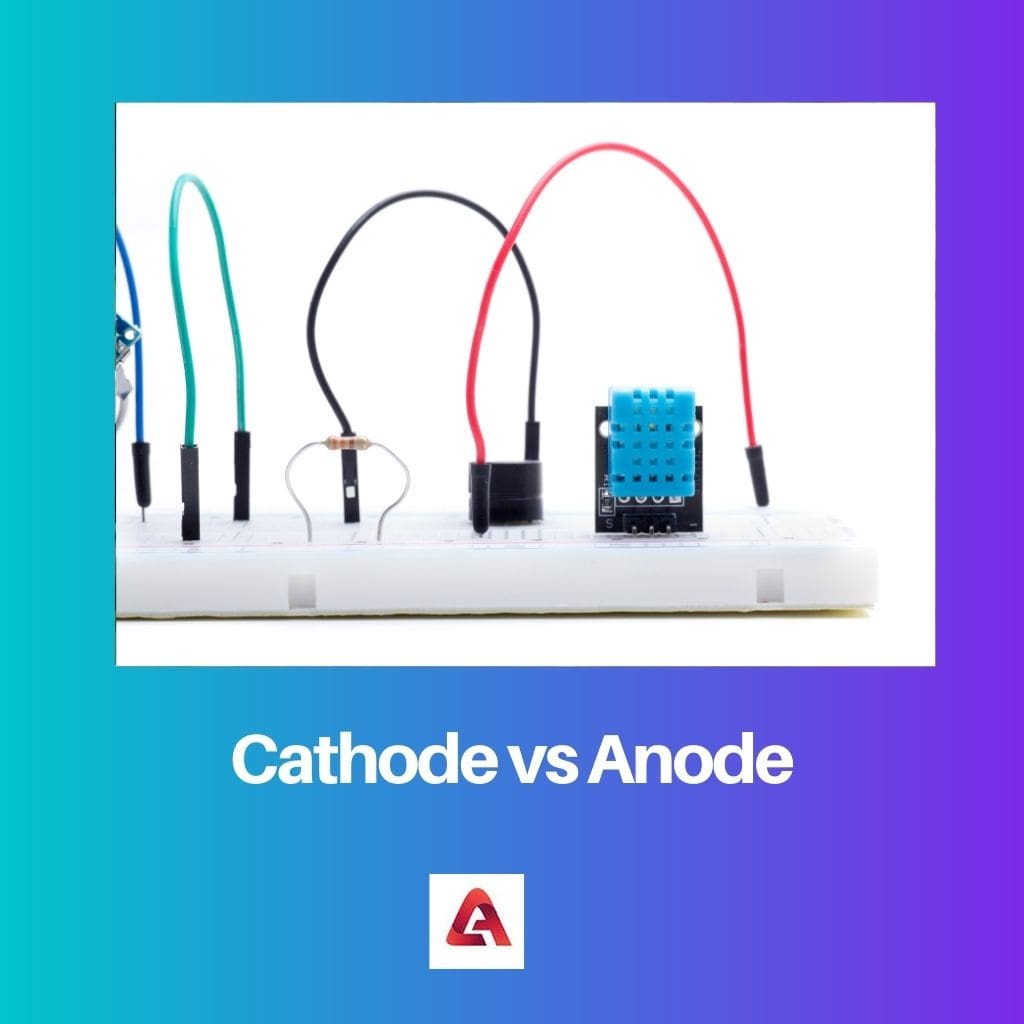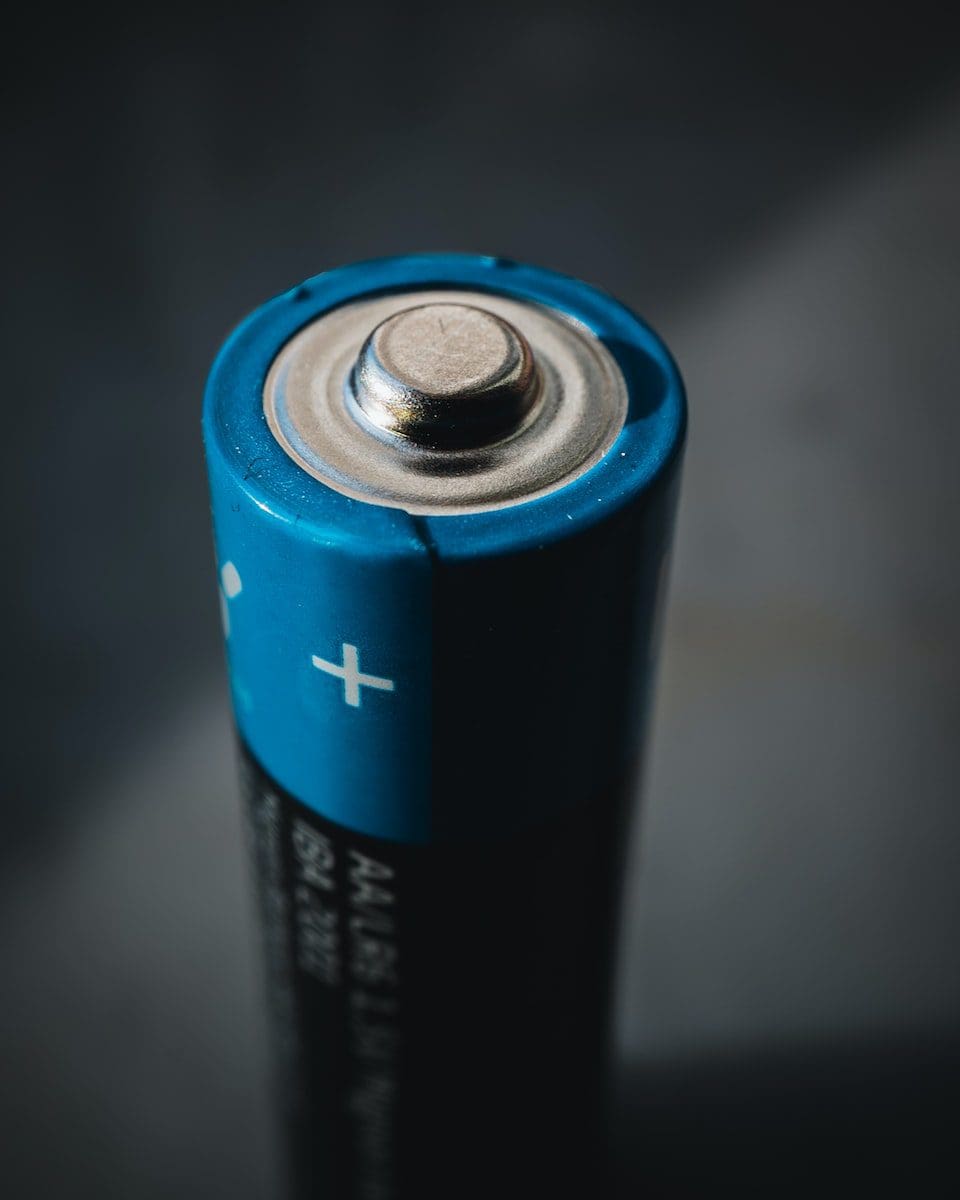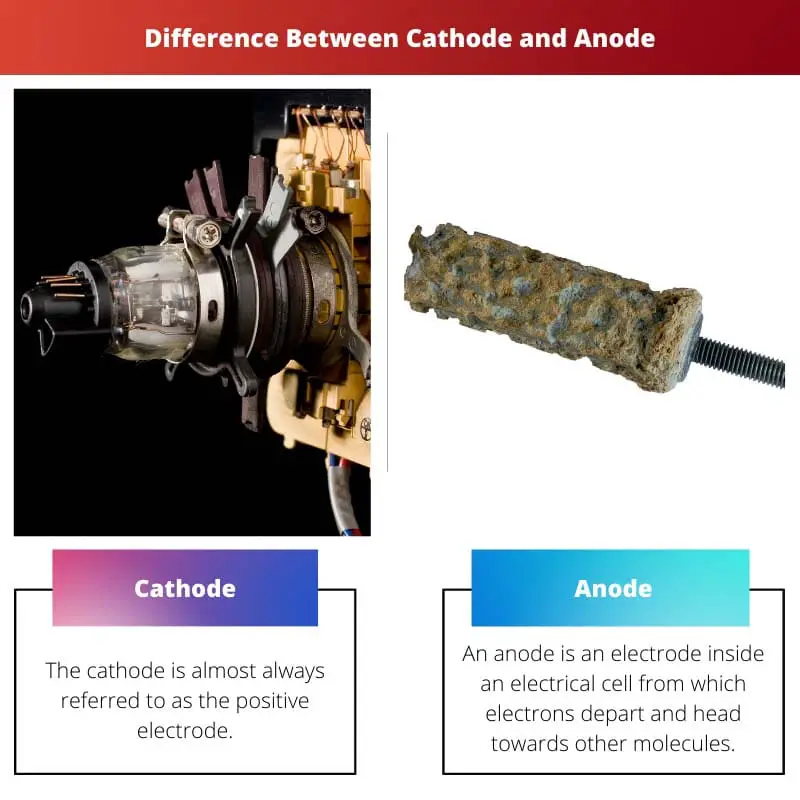The cathode is the electrode where reduction (gain of electrons) occurs in an electrochemical cell or during electrolysis. Conversely, the anode is the electrode where oxidation (loss of electrons) takes place. In summary, the cathode attracts cations and undergoes reduction, while the anode attracts anions and undergoes oxidation.
Key Takeaways
- Cathodes are electrodes where reduction occurs, gaining electrons; anodes are electrodes where oxidation happens, losing electrons.
- In electrochemical cells, cathodes attract positively charged ions (cations); anodes attract negatively charged ions (anions).
- In batteries, the cathode is the positive terminal, and the anode is the negative terminal; in electrolysis, the anode is positive, and the cathode is negative.
Cathode vs Anode
The cathode is the electrode that attracts positively charged ions or cations and is represented with a negative sign (-). The anode is the electrode that attracts negatively charged ions or anions and is represented with a positive sign (+), which is then connected to an external power source.

The cathode and anode locations are not fixed within a cell and can change depending on what happens at any given time. For example, when recharging a rechargeable battery.
Anodes and cathodes in the context of a battery can be confusing, as the labelling of the positive and negative sides of the storm does not match their respective charges.
Comparison Table
| Feature | Cathode | Anode |
|---|---|---|
| Function | Reduction (gains electrons) | Oxidation (loses electrons) |
| Charge (Electrolytic Cell) | Negative | Positive |
| Charge (Galvanic Cell) | Positive | Negative |
| Attracted ions | Cations (positively charged ions) | Anions (negatively charged ions) |
| Example in Battery | Negative terminal | Positive terminal |
| Example in Electrolysis | Where metal is deposited | Where metal is dissolved |
| Mnemonic | “Cathode Catches electrons; Anode Always donates“ |
What is Cathode?
Functions of the Cathode:
1. Reduction Reaction:
One of the primary functions of the cathode is to undergo reduction reactions. During these reactions, positively charged ions or neutral molecules gain electrons at the cathode, resulting in a decrease in their oxidation state. This reduction process is essential for balancing the overall charge in the electrochemical cell.
2. Electron Reception:
As the site of reduction, the cathode acts as the terminal where electrons flow into the external circuit. When a reducing agent, such as a metal ion or a chemical species with a high electron affinity, contacts the cathode, it accepts electrons from the electrode. This electron transfer contributes to the overall electrical current generated by the cell.
3. Electron Flow:
Electrons liberated during oxidation reactions at the anode travel through the external circuit to the cathode. This flow of electrons is facilitated by an external conductor, such as a wire or an electrical load. Upon reaching the cathode, these electrons are transferred to the reducing agent, promoting reduction and completing the electrochemical circuit.
Types of Cathodes:
1. Metal Cathodes:
In many electrochemical systems, metal electrodes serve as cathodes. These electrodes consist of materials with high electron conductivity, such as platinum, gold, or copper. Metal cathodes are commonly employed in galvanic cells, electrolytic cells, and various industrial processes.
2. Inert Cathodes:
In certain electrolytic processes, inert materials, such as graphite or carbon, are utilized as cathodes. These inert electrodes do not participate in the chemical reactions occurring at the cathode; instead, they serve as platforms for facilitating electron transfer and promoting reduction reactions.
3. Semiconductor Cathodes:
In specialized applications, semiconductor materials, such as silicon or gallium arsenide, are employed as cathodes. Semiconductor cathodes find utility in electronic devices, solar cells, and semiconductor-based electrochemical systems, where their unique electronic properties enable precise control over reduction processes.

What is Anode?
Definition and Function
The cathode is an essential component of various electrochemical systems, including batteries, electrolytic cells, and vacuum tubes. It serves as the electrode where reduction reactions occur during these processes.
Electrochemical Processes
In electrochemical cells, the cathode attracts positively charged ions (cations) from the electrolyte solution. These cations undergo reduction reactions at the cathode, gaining electrons to form neutral atoms or molecules. This reduction process is pivotal for generating electrical energy in batteries or facilitating chemical transformations in electrolytic cells.
Example: Battery Operation
In a rechargeable battery, such as a lithium-ion battery, during the discharge process, lithium ions move from the anode to the cathode through the electrolyte. At the cathode, these ions accept electrons and form lithium atoms, which then interact with the electrode material, releasing energy and allowing the battery to power external devices.
Role in Electrolysis
In electrolytic cells, where electrical energy is used to drive non-spontaneous chemical reactions, the cathode still serves as the site of reduction. Here, the cathode supplies electrons to the ions in the electrolyte, causing them to undergo reduction reactions and depositing as neutral species on the cathode surface.
Example: Electroplating
During electroplating, the cathode attracts metal ions from the electrolyte solution. These ions gain electrons at the cathode, forming a metal coating on the surface of the object being plated. This process is extensively used in industries for coating objects with metals such as gold, silver, or chromium.

Main Differences Between Cathode and Anode
- Charge:
- Cathode: Attracts positively charged ions (cations).
- Anode: Attracts negatively charged ions (anions).
- Reaction:
- Cathode: Site of reduction reaction (gain of electrons).
- Anode: Site of oxidation reaction (loss of electrons).
- Electrolytic Cells:
- Cathode: Where reduction occurs.
- Anode: Where oxidation occurs.
- Battery Operation:
- Cathode: Electrode where ions are reduced during discharge.
- Anode: Electrode where ions are oxidized during discharge.
- Electroplating:
- Cathode: Attracts metal ions from the solution and forms a metal coating.
- Anode: Dissolves and releases metal ions into the solution.





